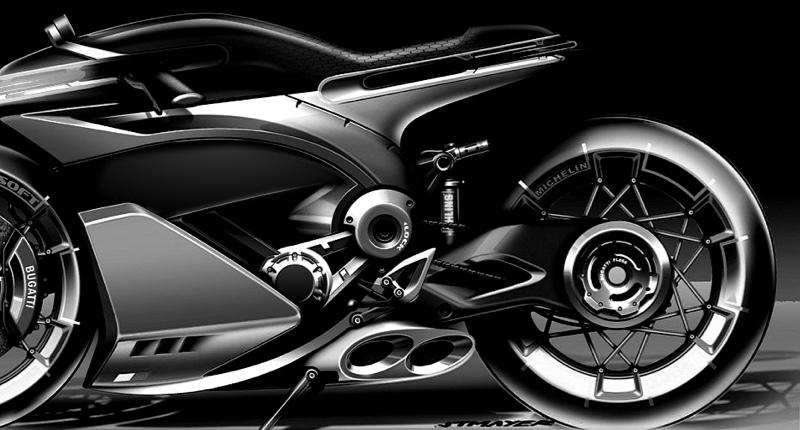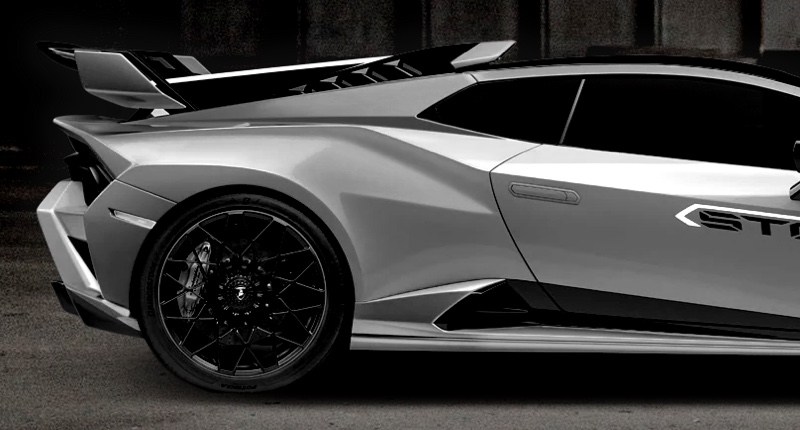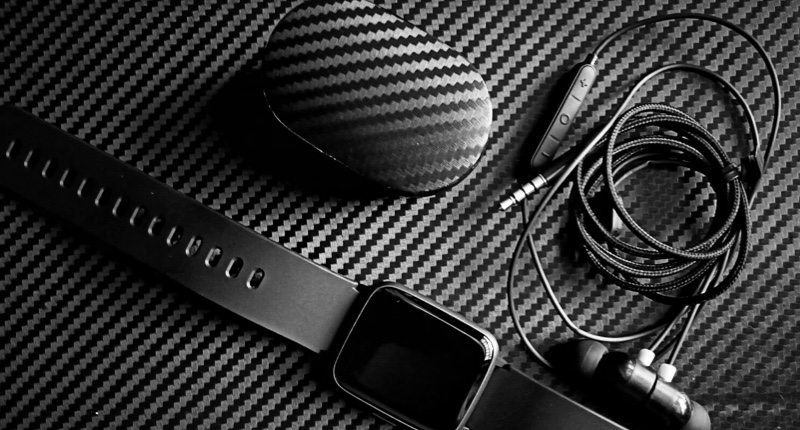How Carbon Fiber Helmets Are Made: Manufacturing Process
- How Carbon Fiber Helmets Are Made: Manufacturing Process
- Why choose a carbon fiber helmet?
- Carbon fiber helmet materials: what goes into the shell
- Design and tooling for carbon fiber helmets
- Layup methods: prepreg vs. wet layup for carbon fiber helmets
- Prepreg layup (preferred for high-end carbon fiber helmets)
- Wet layup and resin infusion
- Molding and curing: turning layup into a structural shell
- Trimming, reinforcement, and EPS integration in carbon fiber helmets
- Surface finishing and paint for carbon fiber helmets
- Inspection and quality control for every carbon fiber helmet
- Safety testing and standards for carbon fiber helmets
- Performance comparison: carbon fiber helmet vs. alternatives
- Manufacturing challenges and common defects in carbon fiber helmets
- Customization and branding of carbon fiber helmets
- Environmental and end-of-life considerations for carbon fiber helmets
- How Supreem Carbon supports carbon fiber helmet and parts projects
- Choosing the right carbon fiber helmet: buyer checklist
- Frequently Asked Questions (FAQ)
- Q: Are carbon fiber helmets safer than fiberglass or polycarbonate helmets?
- Q: How much lighter is a carbon fiber helmet compared to other materials?
- Q: Can I repair a damaged carbon fiber helmet?
- Q: What certifications should I look for on a carbon fiber helmet?
- Q: Are all carbon fiber helmets fully carbon fiber?
- Contact us / View products
- Sources
How Carbon Fiber Helmets Are Made: Manufacturing Process
Why choose a carbon fiber helmet?
Carbon fiber helmets are prized for their exceptional strength-to-weight ratio, sleek aesthetics, and ability to absorb and distribute impact forces. For riders and manufacturers alike, the term carbon fiber helmet signals High Quality performance: lighter weight improves comfort and reduces neck fatigue, and the composite shell can deliver excellent energy management during impacts. This article explains, in practical detail, how carbon fiber helmets are made — the materials, the steps in production, the testing required to meet safety standards, and what to look for when selecting or specifying custom carbon helmet shells.
Carbon fiber helmet materials: what goes into the shell
A high-quality carbon fiber helmet begins with the right materials. Manufacturers typically use one or more of the following:
- Carbon fiber fabric (woven or unidirectional) — provides stiffness, tensile strength, and impact-resistance when combined with resin.
- Prepreg carbon fiber — fiber already impregnated with a specific resin system (epoxy) and partially cured at low temperature; offers consistent resin content and superior performance in autoclave curing.
- Resins — primarily epoxy systems for High Quality helmets due to their toughness and adhesion; polyester or vinyl ester resins are less common in high-end motorcycle helmets.
- EPS (expanded polystyrene) liner — the crushable liner that manages impact energy inside the shell.
- Comfort liners, retention systems, visors, and trim materials — integrated after the shell has passed structural testing.
Choosing prepreg materials versus wet layup affects manufacturing repeatability, strength, and cost. Prepregs are preferred in High Quality carbon fiber helmet production because they enable tighter control over fiber/resin ratios and superior void reduction during autoclave curing.
Design and tooling for carbon fiber helmets
Design and tooling are foundational. Manufacturers create CAD models that incorporate shell geometry, ventilation, visor interfaces, and EPS fitment. The tooling process produces a positive mold (master) and then durable production molds from metal (aluminum tooling) or high-temperature composites. Precision molds ensure consistent shell thickness and fitment tolerance across production runs — critical for safety and certification.
Layup methods: prepreg vs. wet layup for carbon fiber helmets
The layup method defines how the carbon fiber is arranged and wetted with resin. Two primary approaches are used:
Prepreg layup (preferred for high-end carbon fiber helmets)
Prepreg layup involves stacking pre-cut sheets of carbon fiber prepreg onto the mold. Each ply orientation (0°, 45°, 90°) is selected to optimize impact performance and stiffness. Layers are carefully debulked with vacuum to remove trapped air and ensure intimate contact with the mold surface. Common benefits:
- Precise resin content and fiber alignment
- Lower void content after curing
- Superior mechanical properties and repeatability
Wet layup and resin infusion
In wet layup, dry fabrics are placed on the mold and resin is applied manually or infused under vacuum (vacuum-assisted resin transfer molding — VARTM). This method is often less costly but requires strict process control to avoid excess resin or voids. Infusion can produce good results for some helmet designs, but prepreg-autoclave remains the gold standard for High Quality helmets labeled as carbon fiber helmet.
Molding and curing: turning layup into a structural shell
Once the layup is completed, the helmet shell is cured. Typical curing steps for a carbon fiber helmet are:
- Vacuum bagging/debulking — removes trapped air and compacts plies for uniform thickness.
- Autoclave curing (for prepreg) — applying heat and pressure (often 5–7 bar) in an autoclave consolidates the laminate and cures the resin, leading to high fiber volume fractions and low void content.
- Oven curing (for some resin systems or post-cure) — used when autoclave is not available; may include a post-cure stage to optimize resin properties.
Autoclave-cured shells typically show higher interlaminar strength and improved impact resistance compared with non-autoclave parts, which is why many manufacturers investing in performance and certification choose this route.
Trimming, reinforcement, and EPS integration in carbon fiber helmets
After curing, shells are removed from molds and undergo trimming to clean edges, cut visor openings, and prepare attachment features. Reinforcements (such as thicker ply stacks) are added around high-stress areas: visor mounts, chin bar interfaces, and retention anchors. The EPS liner is shaped or molded to match the shell interior and bonded in place with adhesives that maintain performance under temperature and humidity variations.
Surface finishing and paint for carbon fiber helmets
Many riders want visible carbon fiber weaves, so finishing often includes a clear coat. Steps typically include sanding, filling small imperfections with compatible fillers, primer, base coat (if colored), and multiple clear coats for UV and abrasion resistance. High-quality finishes require careful masking of vents and precision around mounting points to maintain fit and function.
Inspection and quality control for every carbon fiber helmet
Quality control is essential. Key inspections include:
- Visual inspection for voids, delamination, and cosmetic defects.
- Dimensional checks to ensure visor and accessory compatibility.
- Non-destructive testing (NDT) such as ultrasound or tapping tests to detect subsurface defects.
- Random destructive testing for mechanical properties and certification validation.
Manufacturers maintain statistical process control (SPC) on critical variables: prepreg lot, cure cycle, autoclave pressure/temperature, and vacuum integrity.
Safety testing and standards for carbon fiber helmets
Meeting regulatory and voluntary safety standards is mandatory for motorcycle helmets to be sold in many markets. Common standards include:
- DOT FMVSS 218 (United States) — a mandatory standard focusing on impact attenuation, penetration resistance, and retention system strength.
- ECE 22.06 (Europe) — updated test protocols including improved oblique impact testing for rotational acceleration management.
- Snell M2020/M2015 (voluntary) — often uses more stringent energy levels and multiple impacts for racing helmets.
Manufacturers design layups and EPS profiles to pass these tests. Oblique impact considerations (rotational acceleration) have increased interest in multi-layer EPS liners, shear-reducing liners, and shell geometries that help manage rotational forces.
Performance comparison: carbon fiber helmet vs. alternatives
Below is a concise comparison of common helmet shell materials to help buyers and specifiers evaluate tradeoffs. Data are representative ranges; actual values will depend on design and manufacturing process.
| Material | Typical Shell Weight (relative) | Impact Performance | Typical Cost | Typical Use |
|---|---|---|---|---|
| Carbon fiber (prepreg, autoclave) | Lightest | Excellent (high strength, good energy management) | High | High Quality racing & high-end road helmets |
| Fiberglass composite | Moderate | Good | Moderate | Mid-range helmets |
| Polycarbonate | Heaviest | Good (depends on shell thickness) | Low | Entry-level and economical helmets |
Sources for comparative properties are industry standards and material handbooks (see end of article for sources).
Manufacturing challenges and common defects in carbon fiber helmets
High-performance carbon fiber helmets demand careful control. Common manufacturing issues include:
- Voids and dry spots — reduce impact performance and can be introduced by poor vacuuming or inconsistent resin distribution.
- Delamination — often caused by contamination, incorrect cure cycles, or insufficient consolidation.
- Inconsistent shell thickness — compromises structural performance and certification compliance.
Addressing these requires robust tooling, controlled environment (temperature/humidity), skilled layup technicians, and NDT capability.
Customization and branding of carbon fiber helmets
Carbon fiber helmets are often customized for OEMs, racing teams, and enthusiasts. Customization options include:
- Custom shell shapes and venting optimized for aerodynamics.
- Unique carbon weaves or colored resins for visual differentiation.
- Integrated mount points for cameras or communication devices.
Suppliers working with OEMs should offer small-batch production capabilities, prototype tooling, and paint/mold integration services to bring a custom carbon fiber helmet design from concept to certified product.
Environmental and end-of-life considerations for carbon fiber helmets
Carbon fiber composites are not easily recyclable in traditional streams. Manufacturers can reduce environmental impact by optimizing material usage, using recyclable core materials where possible, and offering repair or remanufacture programs for helmets that remain structurally sound but are cosmetically damaged. However, most helmets that have been impacted should be retired for safety reasons.
How Supreem Carbon supports carbon fiber helmet and parts projects
Supreem Carbon, established in 2017, specializes in customized carbon fiber parts for automobiles and motorcycles and combines R&D, design, production, and sales to deliver high-quality products and services. With a 4,500 square meter factory and a skilled team of 45 production and technical staff, Supreem Carbon achieves an annual output value of about 4 million dollars. The company offers over 1,000 product types, including more than 500 customized carbon fiber parts.
For brands or OEMs seeking a manufacturing partner for carbon fiber helmet shells or related accessories, Supreem Carbon offers these advantages:
- Integrated R&D and prototyping to develop helmet geometry, layup schedules, and tooling optimized for safety and weight.
- Experience with prepreg layup, autoclave curing, vacuum infusion, and finish processes to meet various price-performance targets.
- Capacity for small-to-medium batch customization and volume production, backed by QC systems and testing protocols.
- Product range that spans carbon fiber motorcycle parts, carbon fiber automobile parts, and customized carbon fiber parts — enabling cross-application design synergies and rapid iteration.
Supreem Carbon's vision is to become the world's leading carbon fiber products manufacturer. To explore custom helmet shells, accessory components, or larger carbon fiber projects, visit https://www.supreemcarbon.com/ or contact their sales team through the website.
Choosing the right carbon fiber helmet: buyer checklist
When evaluating carbon fiber helmets, consider:
- Certification: ensure the helmet meets DOT, ECE 22.06, Snell, or your local required standard.
- Construction: ask whether the shell is prepreg/autoclave or wet layup; prepreg/autoclave generally yields better repeatability and strength.
- Fit and ergonomics: proper fit is critical for performance and comfort.
- Weight vs. cost: ultralight shells command High Quality pricing due to materials and autoclave processing.
- Aftercare and replacement policy: helmets are single-use safety devices after a significant impact.
Frequently Asked Questions (FAQ)
Q: Are carbon fiber helmets safer than fiberglass or polycarbonate helmets?
A: Safer depends on design and certification. Carbon fiber shells offer superior stiffness and excellent strength-to-weight ratios, but overall safety relies on shell design, EPS liner energy management, and helmet certification. A well-engineered fiberglass helmet can meet the same safety standard as a carbon fiber helmet; differences are typically in weight and price.
Q: How much lighter is a carbon fiber helmet compared to other materials?
A: Carbon fiber shells can be significantly lighter — often 10–30% lighter than comparable fiberglass shells and more relative to polycarbonate — depending on design. Actual weight savings depend on ply schedules, EPS thickness, and accessories.
Q: Can I repair a damaged carbon fiber helmet?
A: Small cosmetic damage may be repairable, but any helmet that has experienced a significant impact should be retired. Structural damage may be hidden and can compromise safety. Consult the manufacturer; most safety standards recommend replacement after impact.
Q: What certifications should I look for on a carbon fiber helmet?
A: Look for the appropriate regulatory sticker or label for your market: DOT FMVSS 218 (US), ECE 22.06 (Europe), or Snell (voluntary higher-standard testing). Racing organizations may require Snell certification or additional homologation.
Q: Are all carbon fiber helmets fully carbon fiber?
A: Not necessarily. Some helmets use a carbon fiber outer layer over other composite or thermoplastic substrates. Verify whether the shell is full carbon fiber (structural carbon laminate) or a carbon-look overlay if weight and performance are your priority.
Contact us / View products
If you want to develop custom carbon fiber helmet shells, components, or other carbon fiber parts, Supreem Carbon can help from concept to certified production. Visit Supreem Carbon at https://www.supreemcarbon.com/ to view product lines including carbon fiber motorcycle parts, carbon fiber automobile parts, and customized carbon fiber parts, or contact customer service via the website to discuss a project.
Sources
- DOT FMVSS 218 — U.S. Department of Transportation / National Highway Traffic Safety Administration (helmet safety standard)
- ECE Regulation 22.06 — United Nations Economic Commission for Europe (motorcycle helmet testing standard)
- Snell Memorial Foundation — helmet testing and certification protocols
- CompositesWorld — articles on prepreg and autoclave processing for composite components
- Journal of Composite Materials / Materials science handbooks — general composite material properties and processes
- Industry test reports and motorcycle consumer testing (Motorcycle Consumer News and manufacturer whitepapers)

Elevate Your Ride with Supreem Carbon: The Ultimate Guide to Carbon Fiber Fairings
Custom carbon fiber car parts Manufacturers and suppliers

Enhance Your Honda Motorcycle with Custom Carbon Fiber Parts from Supreem Carbon
Best professional carbon fiber car manufacturers and supplier brands
For Facotry
How many employees of Supreem carbon?
We have over 50 employees, including over 40 skilled workers, 3 R&D designers, and 5 QC professionals and so on.
Supreem carbon main competitive advantages.
Rich experience
Over 10 years production experience in carbon fiber industry, providing customers with high quality carbon products.
Excellent service
From new project development to customer finished product delivery, we provide customers with full tracking and timely feedback on project progress.
High-Quality Products
Our carbon fiber products undergo rigorous quality control to ensure customers achieve the high quality and cost-effective product.
For Products
Supreem Carbon parts produce by 100% carbon?
Yes,all products are made from full carbon with dry carbon.
Which carbon fiber material you can provide in production?
1*1 plain /2*2 twill / forged carbon / honeycomb / kevlar and so on.
For Customized Service
How long does the customized products order take?
This depends on the complexity and mold production cycle of the product. The first sample will be ready in 2-3 weeks after mold finished.

Yamaha R1 Carbon Fiber Side Fairings
Introducing the Supreem Carbon Fiber Long Side Panels for Yamaha R1. Crafted with precision and expertise, this front side fairing is designed to elevate the performance and aesthetics of your R1. Made from high-quality carbon fiber, this fairing is not only lightweight but also incredibly durable, providing optimal protection for your motorcycle.

Yamaha R1 Carbon Fiber Airbox Tank Cover
The Supreem Carbon Yamaha R1 Carbon Fiber Airbox Tank Cover provides lightweight, durable protection with a sleek finish. Designed for R1 models, it enhances the style and performance of your bike. Its lightweight structure improves performance while maintaining the premium aesthetics necessary for high-end modification projects. As a dedicated manufacturer of carbon fiber parts, we provide stable production capacity, customization options, and strict quality control to support enterprise-level procurement and OEM/ODM needs.

Carbon Fiber Rear Seat Panel for BMW S1000R & M1000RR – Lightweight Performance
This carbon fiber rear seat panel is engineered for the BMW S1000R and M1000RR, offering superior rigidity, reduced weight, and a premium racing finish. Produced with autoclave technology and strict QC standards, the part ensures consistent OEM-level fitment. Supreem Carbon provides wholesale supply, stable bulk production, and customized solutions for global clients.

High-Performance Carbon Fiber Rear Undertail for BMW S1000R
Engineered for distributors, tuning brands, and motorcycle accessory businesses, the BMW S1000R Carbon Fiber Rear Undertail is a high-quality, durable, lightweight carbon fiber upgrade for the S1000R platform. This component is manufactured using aerospace-grade carbon fiber and precision molds to deliver superior stiffness, a seamless OEM-level fit, and a premium visual finish suitable for high-end aftermarket applications.
© 2024 Supreem Carbon All Rights Reserved.





Facebook
Pinterest
LinkedIn
Instagram